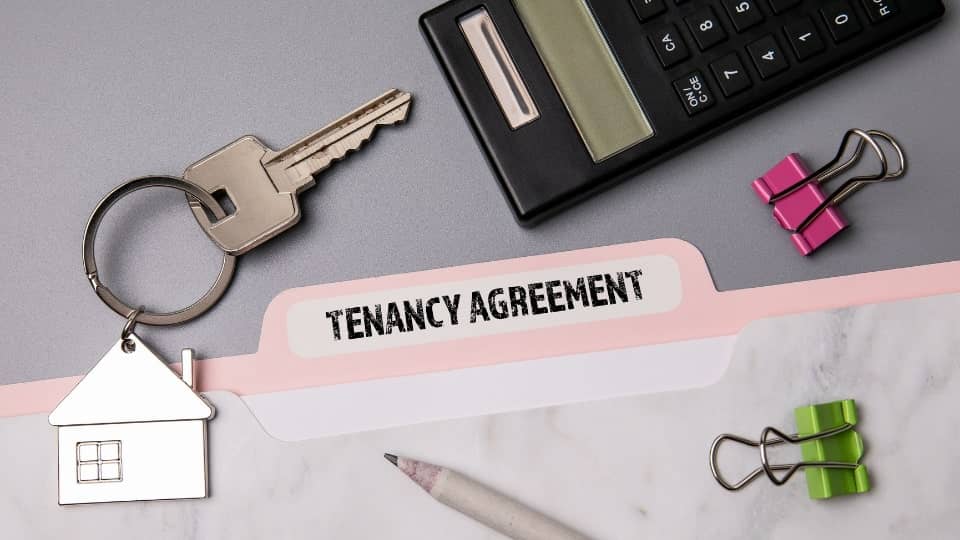How Can I Remove Tenant Without A Tenancy Agreement?
As a landlord, it is important to understand the legal process for evicting tenants without a written tenancy agreement. In some cases, tenants may occupy a property without a formal written lease, either through a verbal agreement or a legally recognized relationship, such as a family member living in the property. In these situations, the eviction process can be complex and challenging.
This article will provide an overview of the steps involved in removing a tenant without a written lease. We will discuss the importance of determining the legal basis for the tenant’s occupancy, consulting the laws in your jurisdiction, negotiating with the tenant, and seeking legal advice if necessary.
We will also cover the procedures for evicting a tenant without a written tenancy agreement, including serving a notice to vacate, attending a court hearing, and enforcing an eviction order. Finally, we will offer tips for protecting your rights and property during the eviction.

Determine the Legal Basis for The Tenant’s Occupancy
When attempting to remove a tenant without a written tenancy agreement, it is important to determine the legal basis for the tenant’s occupancy. In some cases, the tenant may have a verbal agreement with the landlord, which may still be legally enforceable depending on your jurisdiction’s specific circumstances and laws.
If there is no written lease or verbal agreement, the tenant’s occupancy may be based on a legally recognized relationship with the property owner. For example, the tenant may be a family member living in the property or a “tenant at will” who has been allowed to occupy the property without a formal agreement.
In order to determine the legal basis for the tenant’s occupancy, it is important to review any available documentation, such as receipts or other records of payment, and consult with an attorney if necessary. This will help establish the tenant’s rights and obligations and provide a starting point for determining the appropriate course of action.
Consult the Laws in Your Jurisdiction
Once you have determined the legal basis for the tenant’s occupancy, it is important to consult the laws in your jurisdiction regarding eviction procedures. Different states and countries have different rules and regulations regarding the eviction of tenants, so it is important to understand your rights and obligations as a landlord.
Rules and Regulations for Evicting Tenants in Your Area
For example, some jurisdictions may require that landlords provide a certain amount of notice to tenants before initiating eviction proceedings, while others may have more flexible rules. It is also important to consider the specific circumstances of the tenant’s occupancy, such as whether they are a family member or a tenant at will, as this may affect the eviction process.
Action Based on The Laws in Your Jurisdiction
By consulting the laws in your jurisdiction, you can determine the appropriate course of action for removing a tenant without a written tenancy agreement. This may include serving a notice to vacate, attending a court hearing, and obtaining a court order for eviction. It is also important to consider seeking legal advice to ensure that you follow the correct procedures and protect your rights as a landlord.
Attempt to Negotiate a Mutually Agreed upon Date for The Tenant to Vacate
Before pursuing legal action to remove a tenant without a written tenancy agreement, it may be beneficial to attempt to negotiate a mutually agreed upon date for the tenant to vacate the property. This can often be done informally, without the need for legal action.
Benefits of Resolving the Situation without Legal Action
There are several benefits to informally resolving the situation through negotiation. It can often be faster and less expensive than pursuing legal action. It can also help to preserve the relationship between the landlord and tenant, which may be important if the tenant is a family member or someone with whom the landlord has a long-standing relationship.
Tips for Effectively Negotiating with The Tenant
To effectively negotiate with the tenant, it is important to approach the situation calmly and respectfully. It may be helpful to communicate your reasons for wanting the tenant to vacate the property, and to listen to the tenant’s concerns and suggestions. It is also important to be flexible and open to compromise, as this can help to reach a mutually acceptable resolution.
If the tenant is unwilling to vacate the property, it may be necessary to seek legal advice to determine the appropriate course of action. This may include filing an eviction notice or other legal action.
Seek Legal Advice if Necessary
If the tenant refuses to vacate the property, even after attempting to negotiate a mutually agreed-upon date, it may be necessary to seek legal advice. An attorney can help you understand your rights and obligations as a landlord and provide guidance on the appropriate action for removing the tenant.
In some cases, an attorney may be able to assist with negotiating with the tenant and reaching a mutually acceptable resolution. If the situation cannot be resolved informally, an attorney can help you to file an eviction notice and represent you in court, if necessary.
It is important to understand that the eviction process can be complex and time-consuming, so
seeking legal advice can help ensure that you follow the correct procedures and protect your rights as a landlord. An attorney can also provide valuable guidance and support throughout the process and help ensure that the tenant is removed from the property as quickly and efficiently as possible.
Procedures for Evicting a Tenant without A Written Tenancy Agreement
If it is not possible to informally resolve the situation with the tenant, the next step in the eviction process is to follow the procedures outlined by your jurisdiction’s laws for evicting a tenant without a written tenancy agreement. This may include serving the tenant with a notice to vacate, attending a court hearing, and obtaining a court order for eviction.
Serve the Tenant with A Notice to Vacate
Serving a notice to vacate is the first step in the eviction process. This written notice informs the tenant of the landlord’s intention to evict and provides a specified amount of time for the tenant to vacate the property. The amount of time that the tenant is given to vacate the property will depend on the laws in your jurisdiction. It may vary depending on the specific circumstances of the tenant’s occupancy.
Attend a Court Hearing and Obtain a Court Order for Eviction
After serving the tenant with a notice to vacate, the next step is to attend a court hearing. At the hearing, the landlord and tenant can present their case to the judge. The judge will then decide whether to grant an eviction order, legally requiring the tenant to vacate the property.
If the judge grants an eviction order, the landlord will enforce the order and remove the tenant from the property. This may require the assistance of law enforcement, depending on the laws in your jurisdiction. It is important to carefully follow the procedures for evicting a tenant without a written tenancy agreement, as failure to do so may result in delays or other complications.
Enforcing the Eviction Order
After obtaining a court order for eviction, the next step is to enforce the order and remove the tenant from the property. In some cases, this may require law enforcement assistance, such as the local police department. Law enforcement officers can help to ensure that the eviction is carried out safely and peacefully and can assist with removing the tenant from the property if necessary.
It is important to carefully follow the procedures for enforcing an eviction order, as failure may result in delays or other complications. It may also be necessary to protect your property during the eviction, such as changing the locks or removing the tenant’s belongings from the premises.
Tips for Protecting Your Property During the Eviction Process
There are several steps that landlords can take to protect their property during the eviction process. For example, landlords may want to document the property’s condition before the tenant is evicted and take photos or videos as evidence. Landlords should also consider securing any valuables or sensitive documents and avoid confrontations with the tenant during eviction.
By carefully following the procedures for evicting a tenant without a written tenancy agreement and taking steps to protect your property, you can ensure that the eviction is carried out smoothly and successfully.
Conclusion
In conclusion, removing a tenant without a written tenancy agreement can be a complex and challenging process. It is important to understand the tenant’s occupancy’s legal basis and consult the laws in your jurisdiction to determine the appropriate course of action.
The steps involved in removing a tenant without a written lease may include attempting to negotiate a mutually agreed-upon date for the tenant to vacate, seeking legal advice, serving a notice to vacate, attending a court hearing, and enforcing an eviction order. You can successfully remove a tenant without a written tenancy agreement by carefully following these steps and protecting your rights and property.
It is also important to understand your jurisdiction’s laws and seek legal advice if necessary. An attorney can provide valuable guidance and support throughout the eviction process and help ensure that the tenant is removed from the property as quickly and efficiently as possible.






